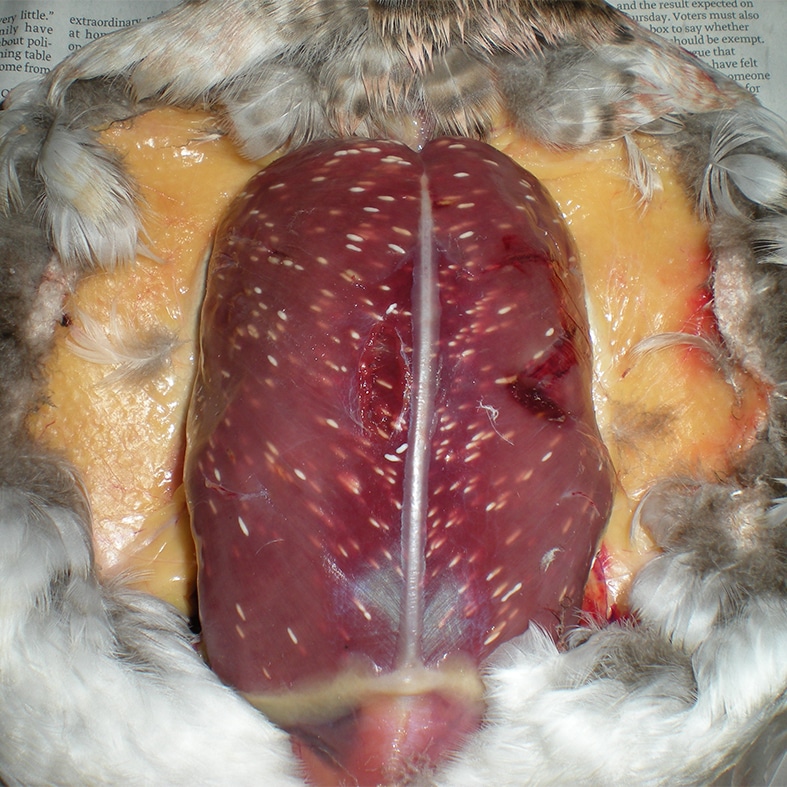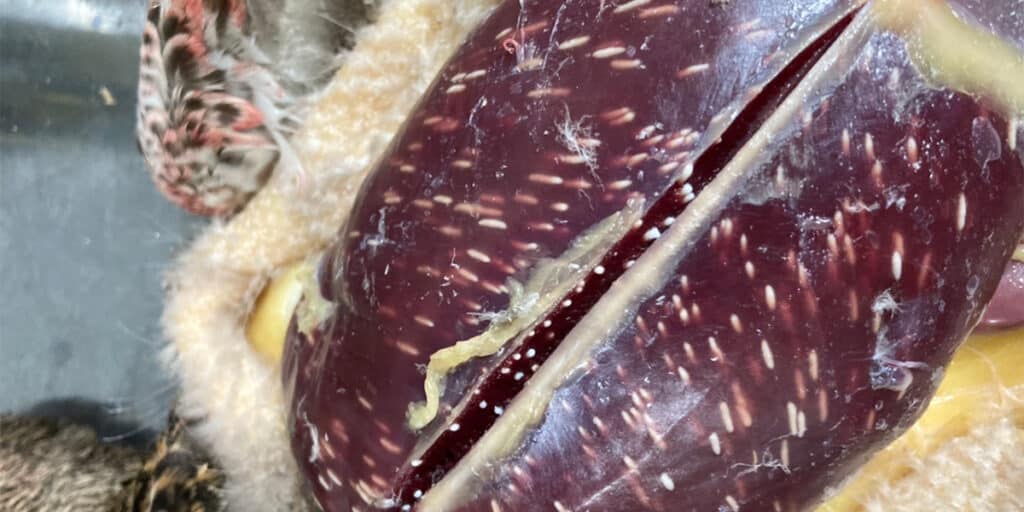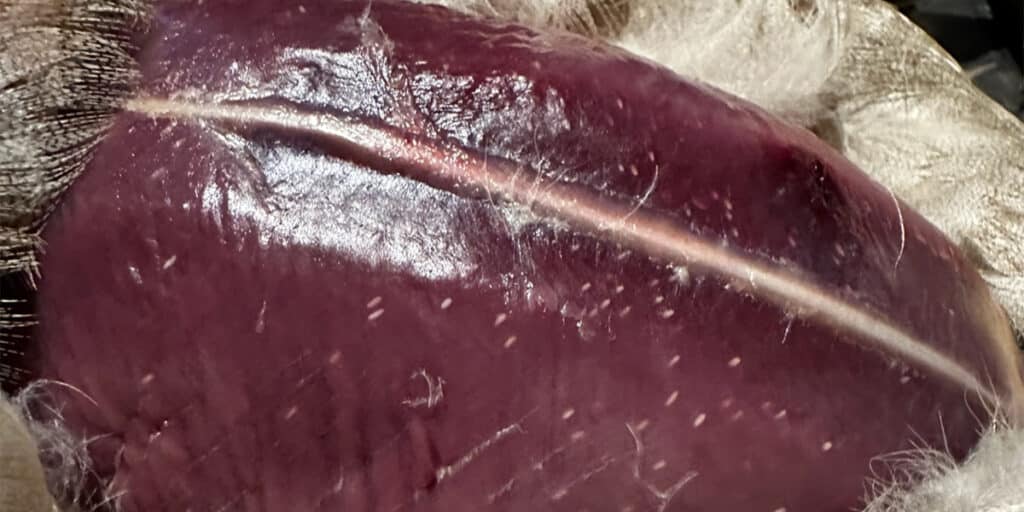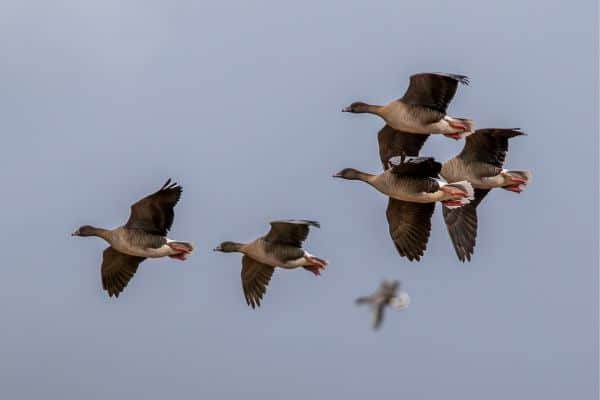
Green shoots mapping
Green shoots mapping is an online platform that offers shoot mapping and bag recording services.
Get information on the legal shooting season for mammals and birds in the UK.
Learn about our current conservation projects and how you can get involved.
Comprehensive information and advice from our specialist firearms team.
Everything you need to know about shotgun, rifle and airgun ammunition.
Find our up-to-date information, advice and links to government resources.
Everything you need to know on firearms law and licensing.
All the latest news and advice on general licences and how they affect you.


Conservation in Action Conservation projects Rice breast disease monitoring
More commonly referred to as ‘rice breast’ disease, Sarcocystosis is a parasitic disease caused by the parasite Sarcocystis spp. It infects the muscle of wildfowl sometimes causing weakness, which can result in decreased survival rates and reproductive success.
Birds play an important role in the lifecycle of this parasite. During later stages of infection in birds, the parasite creates cysts throughout the muscles, particularly in the breast and leg which resemble grains of rice, hence the name ‘rice breast’ disease.


Sarcocystosis can affect various quarry species. And as most members of the shooting community shoot with the intention of consuming what they shoot, it is crucial to know how to spot the signs of the disease.
Although Sarcocystosis in birds does pose a minimal threat to humans as cooking kills all stages of the parasite, is it not recommended to ingest infected birds, nor to feed them to dogs.
In order to preserve our UK duck populations, it is vital that we act responsibly and monitor the disease as best we can in order to understand its impacts on our wildfowl and track the spread of the disease.
Wildfowlers play a crucial role in the identification and reporting of this disease.
Your help in recording cases is key to increasing our understanding of Sarcocystosis occurrence and its impact in the UK. We ask that you remain vigilant and report any findings of rice breast disease to us by filling out our UK Wildfowl Sarcocystosis survey form.
In 2018 a feedback report was published, using data provided through the UK Wildfowl Sarcocystis Survey and results from tissue sample analysis from across the UK. The report identified the emergence, distribution, and potential impacts of Sarocystosis infection in the UK waterfowl population.
We saw a sudden increase in reported cases in the 2013/14 season, however, this may be a reflection of increased vigilance and understanding of the disease as well as improved awareness of the reporting system.
The most commonly reported species were mallard, wigeon and teal, although this may be simply because they are the most commonly shot species. Reported cases have been more highly concentrated in northern and eastern regions of the country which may indicate that the disease is spreading from Europe.
Your reported sightings are vital to helping us track the geographical spread of this disease.

Green shoots mapping is an online platform that offers shoot mapping and bag recording services.

The wing survey is a monitoring project which collects data about shot ducks, geese and waders from wings that are collected by shooters.

Read our autumn update on BASC conservation projects, including how you can get involved.
Sign up to our weekly newsletter and get all the latest updates straight to your inbox.
© 2023 British Association for Shooting and Conservation. Registered Office: Marford Mill, Rossett, Wrexham, LL12 0HL – Registered Society No: 28488R. BASC is a trading name of the British Association for Shooting and Conservation Limited which is authorised and regulated by the Financial Conduct Authority (FCA) under firm reference number 311937.
If you have any questions or complaints about your BASC membership insurance cover, please email us. More information about resolving complaints can be found on the FCA website or on the EU ODR platform.
This website uses cookies so that we can provide you with the best user experience possible. Cookie information is stored in your browser and performs functions such as recognising you when you return to our website and helping our team to understand which sections of the website you find most interesting and useful.
Strictly Necessary Cookie should be enabled at all times so that we can save your preferences for cookie settings.
If you disable this cookie, we will not be able to save your preferences. This means that every time you visit this website you will need to enable or disable cookies again.
This website uses Google Analytics to collect anonymous information such as the number of visitors to the site, and the most popular pages.
Keeping this cookie enabled helps us to improve our website.
Please enable Strictly Necessary Cookies first so that we can save your preferences!
More information about our Cookie Policy